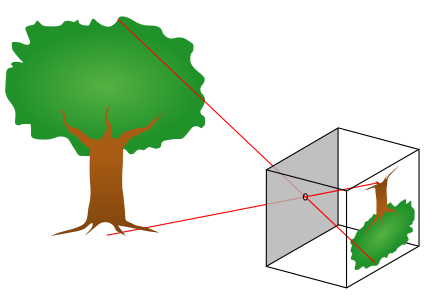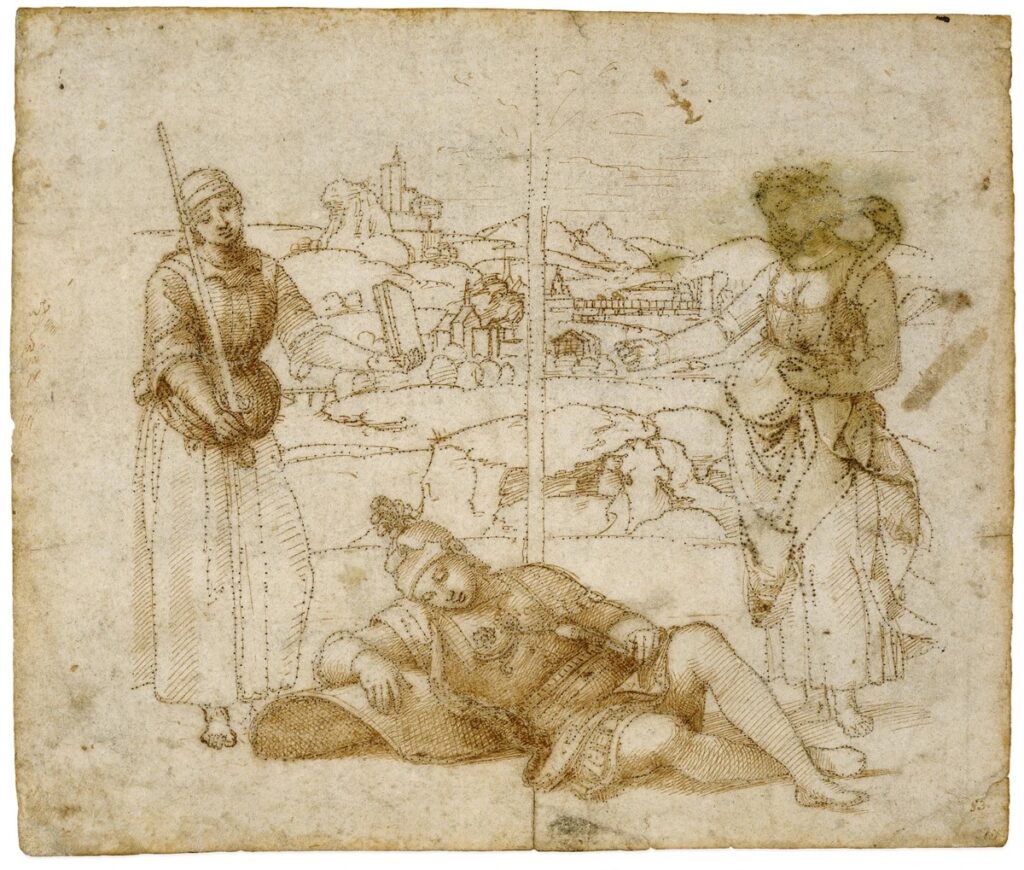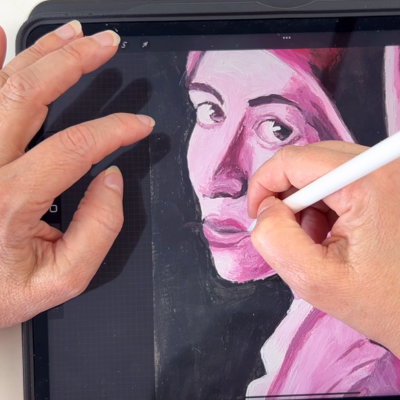Is tracing cheating in art?
Is tracing cheating in art, or is it just another tool in an artist’s toolbox? Are you an artist who sometimes finds it challenging to get the proportions and perspective right? Or maybe you’re wondering if using tracing techniques in art is considered cheating?
In this blog post, we’ll explore tracing history, its pros and cons, and how to balance tracing and originality in our artistic journeys.
Table of Contents
You can watch the video if you prefer:
Historical background of tracing
You might be surprised to learn that tracing has been around for centuries and has played a significant role in the works of some of the most prominent artists in history.
Old masters used camera obscura
Let’s start with the Old Masters, such as Vermeer, Caravaggio, and Leonardo da Vinci. They often used the “camera obscura” to project an image onto their canvas or paper, which helped them accurately capture scenes and subjects. The camera obscura was a simple tool – essentially a dark room or box with a small hole on one side to let light in, projecting an image of the outside world onto a surface inside. This technique allowed artists to create incredibly realistic paintings that were true to life.

Old masters used blueprints.
Another interesting example of tracing in history is using blueprints by artists like Michelangelo and Raphael. The artist would create his drawing and then use “pouncing” to transfer the design onto the final surface. Pouncing involved pricking tiny holes along the drawing lines and then dusting charcoal or chalk powder over it, leaving a faint outline on the surface below, which the artist would then paint over.

Modern artists use projectors and digital.
As we moved into the modern era, tracing techniques continued to evolve. Artists like Norman Rockwell and Andy Warhol used projectors to cast images onto their canvases, allowing them to quickly and accurately reproduce photographs in their artworks.
In our digital era, it’s even easier to trace: import your photo in Photoshop, Procreate, or any other software, add a layer on top, and trace on top of the image. Technology has come a long way, but tracing remains one of the artists’ most important tools.
Now that we’ve taken a trip down memory lane, let’s explore the pros and cons of tracing to help us better understand the debate around its legitimacy in art.
The pros of tracing
While some might view tracing as a form of cheating, there are some valid reasons why it can be a valuable tool in the artistic process. Here are some of the advantages that tracing can offer:
Time-saver:
I don’t know about you, but life can get pretty hectic sometimes. Tracing can be a lifesaver when you’re working on a tight deadline. It helps you capture the subject’s essence quickly and accurately, giving you more time to focus on other essential aspects of your artwork, like color, shading, and texture.
Confidence booster:
Let’s face it, we all start somewhere in our artistic journey and sometimes feel insecure about our drawing skills. Tracing can be an excellent way to build confidence by helping you understand your subject’s underlying structure and shapes. It’s like having a little helping hand guiding you along the way!

Learning tool:
Tracing can be invaluable for learning and understanding the techniques of the great masters. Recreating their work through tracing gives you a deeper appreciation for their skill and decisions throughout the creative process. It’s like getting a behind-the-scenes tour of their artistic minds!
Consistency:
When working on a series of illustrations or pieces that require a consistent style, tracing can help ensure that your characters and elements maintain the same look and feel throughout your work.
Experimentation:
Tracing can also be a fantastic tool for experimenting with different styles or techniques. By tracing elements from various artists, you can create unique combinations and develop your artistic voice. Think of it as a springboard for your creativity!
While tracing might not be for everyone, it has its merits, and some of the most famous artists in history have utilized it in their work. As with any tool or technique, it’s all about how you use it and what you learn from the experience.

When I’m painting portraits, I use red transfer paper, as it will blend in skin colors. This is the transfer paper I’m using. It’s wax free and has different colors, and you can erase the lines like a pencil. And it doesn’t smear or smudge. It’s my favorite!

The cons of tracing
While tracing can have its benefits, there are also some drawbacks that we should be aware of. Let’s take a look at some of the cons of tracing:
Stifled creativity:
As much as tracing can help us learn and understand different techniques or styles, it can also limit our creativity. When we trace, we might inadvertently hinder our ability to develop our unique artistic voice as we focus on replicating someone else’s work.
Lack of skill development:
Tracing can help build confidence, but relying too much on it can prevent us from honing our drawing and observation skills. To grow as artists, we must push ourselves out of our comfort zone and practice drawing from life, imagination, or references without tracing.
Ethical concerns:
Tracing someone else’s work, especially without their permission or proper attribution, can raise ethical questions, to say the least. It can be theft also! It’s important to respect other artists and their creations and ensure we’re not crossing any boundaries regarding copyright and intellectual property.
Perception issues:
In the art world, there may be a stigma attached to tracing, as some might view it as cheating or lacking in authenticity. If you’re an aspiring artist looking to build your reputation, being known for tracing could potentially harm your credibility.
Over-reliance:
While tracing can be a helpful learning tool, it’s important not to become overly dependent. As we grow and develop as artists, we should strive to incorporate various techniques and approaches to our work to stay energized and active in our artistic expression.
Conclusion
So, friends, we’ve explored both the pros and cons of tracing, and I hope it’s given you some food for thought. The bottom line is that art is a personal journey, and there’s no one-size-fits-all approach. It’s important to remember that there is no such thing as “cheating” in art. It’s all about expressing yourself, exploring new ideas, and finding what works best.
At the end of the day, your art is your playground, and you have the freedom to experiment, learn, and grow in your unique way. Whether you choose to trace or not, the key is to stay true to yourself and your artistic vision. Embrace the process, learn from your experiences, and don’t be afraid to push the boundaries of your creativity.
As artists, we constantly evolve and discover new ways of seeing and interpreting the world. So, explore, create, and, most importantly, have fun! Remember, art reflects your individuality, and there’s no right or wrong way to express it. Happy creating, everyone!






